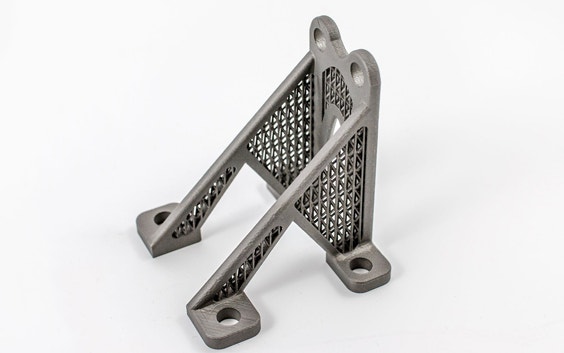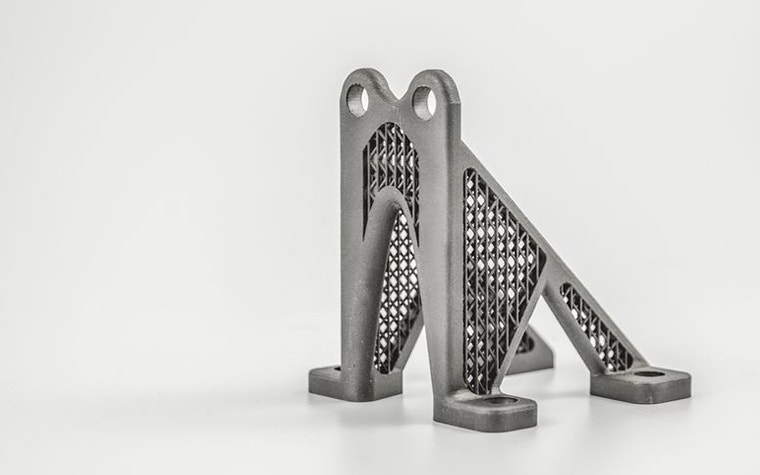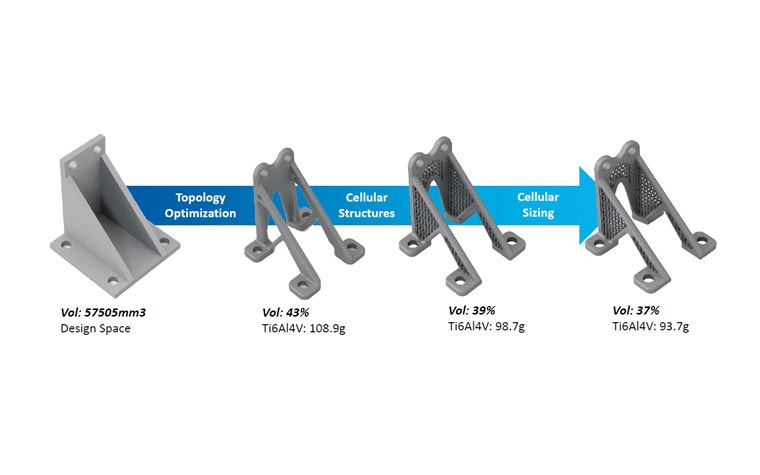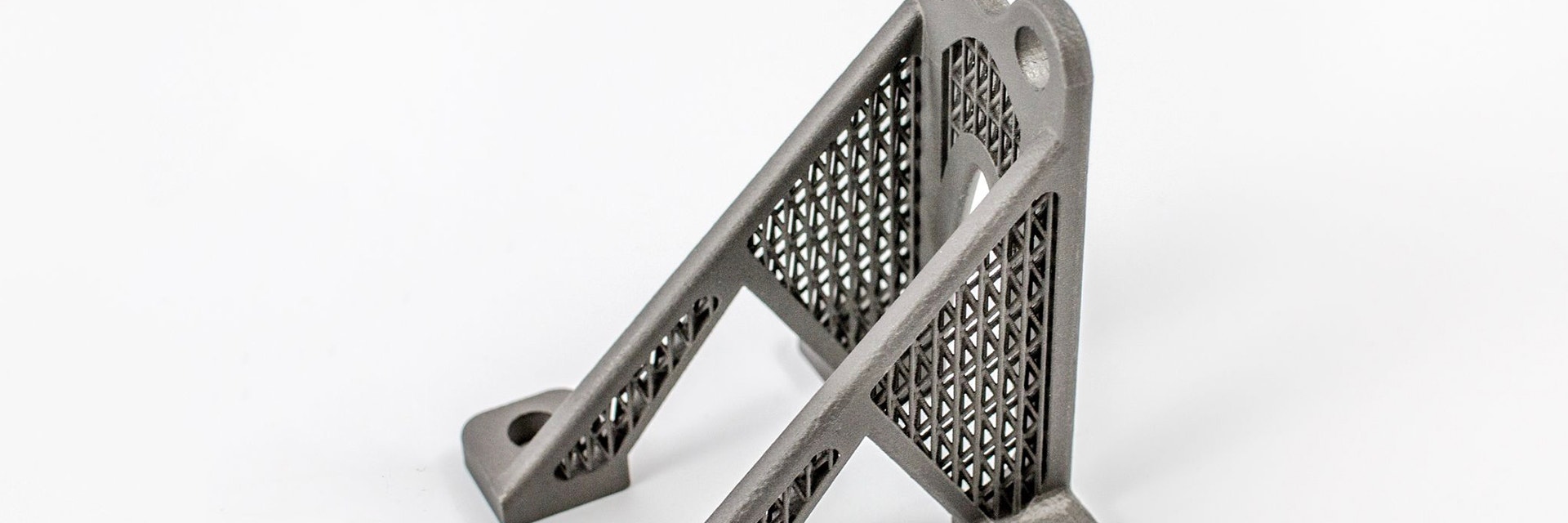CASE STUDY
A 63% Lighter Titanium Aerospace Part

GE Aviation 3D printed their famous fuel nozzle in one piece. They are one of the many companies that understand the huge impact 3D printing technology can have on the aerospace industry, not only in terms of supply chain, but also in terms of weight reduction. A lighter airplane means lower fuel costs.
With Materialise software that is perfectly compatible with simulation and analysis software, you can create strong and light industrial metal parts. This aerospace part was 3D printed in titanium at our metal competence center in Bremen, with a 63% weight reduction compared to the traditionally manufactured part.


How to obtain strong lightweight parts
To reduce the weight of the bracket as well as the support structures, the Materialise team used design enhancement software Materialise 3-matic to check which zones could be replaced by cellular structures. These use less material, while maintaining the required stiffness. Then the team decided on the size and position of the unit cells and redesigned the part to ensure its printability.
Afterwards, the team modified the beam diameters according to stresses and printability criteria. Finally, they tested the stress accumulation in the final design and checked if topological changes were necessary. After these simulation iterations, the bracket’s weight was reduced by an impressive 63%.


The benefits of powerful 3D printing software
The final result was that:
- Sacrificial supports were replaced by functional lightweight structures
- Less post-processing was necessary
- The total amount of material was reduced by 63%
- The thermal stress was reduced due to less bulk material and larger support areas
Thanks to the strong connection between Materialise 3-matic software and FEA analyses, the metal part was strong and 3D printable. The significant weight reduction leads to a smaller carbon print and less fuel usage for airplanes.
Share on:
This case study in a few words
Aerospace
Materialise 3-matic
Cellular structures
Reduce the weight of a metal bracket, without compromising strength
